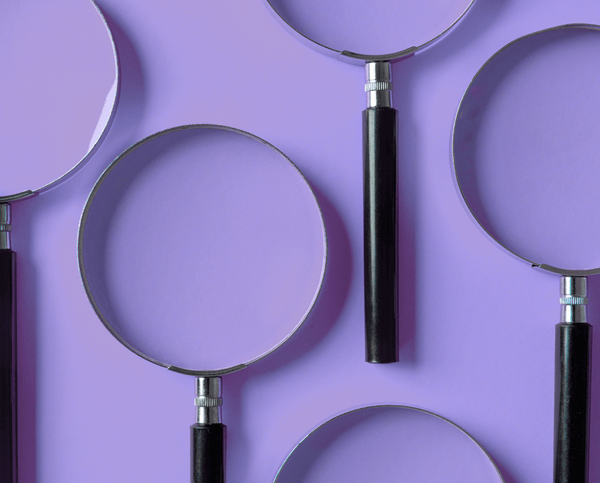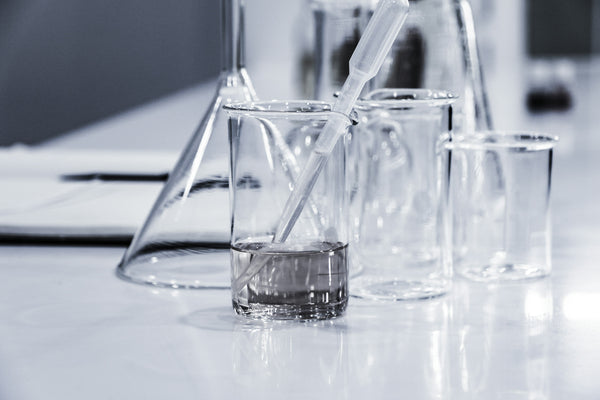Article
Getting Started with Fertility: Key Statistics, What They Mean, and What to Know
Posted on
Whether you're thinking about trying to conceive or already exploring assisted fertility options, understanding the data can be both empowering and clarifying.
In this guide, we break down the most current fertility statistics across age, IVF success, male fertility, lifestyle, and more. Click to jump to the section that matters most to you:
👶 Fertility by Age
🧪 IVF Success Rates
🧬 Fertility Supplements & Nutrition
🧍♂️ Male Fertility in Focus
🧘 Stress, Sleep & Lifestyle Impact
🌍 Global & UK Fertility Trends
🧰 Helpful Tools & Trackers
Fertility by Age

Women aged 25–29 have a ~78% chance of conceiving naturally within one year1
Conception is most likely during the mid-to-late twenties, with nearly 4 in 5 couples conceiving within a year.
This is often considered the peak reproductive window, but it’s important to remember that good fertility health can still be supported well beyond this age through diet, lifestyle, and supplementation. For more information about supporting your fertility when you're getting started in this age group, if there are no known conditions, tap here.
Women aged 30–34 have a ~63% chance of conceiving naturally within one year2
Fertility remains relatively high in the early thirties, with just over 60% of women conceiving within 12 months. While there is a gradual age-related decline, many people go on to conceive in this age group with no difficulty. For those looking to be proactive, supporting hormone balance and egg health through personalised nutrition and supplementation can make a meaningful difference.
For more information about fertility in your 30's, tap here.
Natural conception per cycle drops from ~25% at age 25 to ~10% at age 403
Each menstrual cycle carries a lower chance of conception as we age — from about 1 in 4 at age 25 to 1 in 10 at 40. While this can feel disheartening, it's worth knowing that age alone doesn't tell the full story. Many people conceive at 40 and beyond, and there are many ways to optimise the chances, including tracking ovulation, supporting egg and sperm quality, and seeking advice early if concerned. Learn more on that here.
~36% of women aged 40–44 conceive naturally within a year4
Fertility is less predictable after 40, with around one-third of women conceiving within 12 months. While this number reflects a biological trend, it doesn’t mean natural conception isn’t possible. Many in this age group benefit from targeted support, whether through nutrition, lifestyle changes, or assisted fertility treatments that work with your body, not against it. Learn more here.
For women over 45, natural conception drops to less than 5%5
After 45, natural conception becomes unlikely, with fewer than 1 in 20 experiencing spontaneous pregnancy. However, this is not the end of the road for many. Options such as IVF using donor eggs have helped thousands of people grow their families at this life stage. At Zita West, we believe that informed support, both emotional and clinical, is key in navigating fertility later in life.
At age 35, miscarriage risk is ~20%; by 40, it rises to ~40%6
Miscarriage is a deeply personal and often painful experience, and it’s more common with age due to changes in egg quality. At 35, around 1 in 5 pregnancies may end in miscarriage, rising to 2 in 5 by age 40. While these figures can feel daunting, they also highlight the importance of preconception support , like supplementing with folate, CoQ10, and antioxidants such as NAC, which may help support chromosomal health.
In developed countries, the average age at first birth increased to 30.9 years in 2022 from 28.6 in 20007
The age at which people start their families is shifting. In Europe, it’s now common to have your first child in your early thirties. This reflects broader societal changes, and while it may come with some additional fertility considerations, it also means more people are seeking support earlier and using tools like fertility testing or supplements to plan ahead.
At age 35, the average AMH level is 2.1 ng/mL, indicating reduced ovarian reserve8
AMH (Anti-Müllerian Hormone) gives an indication of how many eggs are available, not the quality. By 35, levels are typically lower than at 25, but it's the health of the remaining eggs that counts. With the right support and including nutrients like omega-3 and CoQ10, it may be possible to improve egg quality and, in turn, your chances of conceiving.
Learn more about supporting your egg health here.
In 2023, 30.9 years was the mean age of first-time mothers in the UK9
This is the highest on record, and speaks to the many reasons people wait to start a family. With fertility awareness growing, more people are using that time to build healthy foundations, from optimising hormone balance to addressing underlying health conditions early.
By age 30, women lose ~88% of their ovarian reserve10
This statistic can sound alarming, but it’s important to understand that quality matters more than quantity. Even with fewer eggs, steps can be taken to ensure they are in the best possible condition. Nutritional support, reducing inflammation, and supporting hormone health can support fertility outcomes.
IVF Success Rates

Women under 35 have a ~32% live birth rate per IVF cycle11
Starting IVF earlier may improve chances, but success still depends on multiple factors, including embryo quality, lifestyle, and the clinic’s protocols.
IVF success for women aged 35–37 is ~25% per cycle12
While slightly lower than under-35s, IVF in the mid-30s can still be very effective. Tailored nutritional and supplement support may enhance outcomes during this phase.
Women aged 38–40 have ~15% success rate per IVF cycle13
Success begins to decline more steeply after 38, but many do conceive — often after multiple rounds. Supporting egg quality, hormone levels, and stress reduction can improve cycle outcomes.
IVF live birth rates drop below 5% after age 4414
While IVF becomes less effective after 44 with your own eggs, using donor eggs remains a strong option and often yields success rates similar to younger age groups. To learn more about IVF after 40, tap here.
Donor eggs lead to ~45–55% success rate regardless of recipient age15
This statistic shows that it’s not just age, but egg quality, that matters most in IVF outcomes. Donor eggs can offer a hopeful path when other treatments haven't worked.
Fertility Supplements & Nutrition

CoQ10 supplementation may improve egg quality in women over 3516
CoQ10 supports mitochondrial function in eggs, potentially enhancing embryo development in women experiencing age-related fertility decline. This is why it's often recommended during preconception and IVF prep.
Folic acid reduces neural tube defects and supports early development17
Folic acid is one of the most widely recommended nutrients during the preconception period. It also supports cellular division during early embryo formation. We often recommend folate over folic acid, as this is the bioavailable form.
Omega-3 fatty acids are associated with better embryo quality and ovulation18
These essential fats help regulate hormones and reduce inflammation, both of which are key in supporting fertility outcomes. To learn more about the role of omega-3 in fertility, tap here.
Vitamin D supplementation may raise the odds of achieving a clinical pregnancy19
Vitamin D plays a role in ovarian reserve, implantation, and immune regulation, all essential for successful conception.
Male Fertility in Focus

Sperm counts have declined by ~50% globally over the past 40 years20
This startling trend, is thought to be influenced by environmental toxins, lifestyle factors, and rising obesity rates, highlighting the need for male preconception support too. We recently unpacked this trend here.
Smoking reduces sperm count by 17.5%21
Smoking has been repeatedly linked to reduced motility, morphology, and overall count. Quitting is one of the most impactful changes for improving male fertility.
High BMI is associated with lower sperm quality and testosterone levels22
Carrying excess weight can impair hormone balance and negatively affect sperm production. Moderate weight loss and balanced nutrition can reverse these effects over time.
Vitamin C & E supplementation improves sperm motility and DNA integrity23
These antioxidants help reduce oxidative stress in sperm, especially for men with poor semen parameters or lifestyle exposures (e.g., pollution, heat, stress). We've unpacked this in further detail here.
Stress, Sleep & Lifestyle Impact

Getting less than 6 hours of sleep per night is linked to 20% lower conception odds24
Sleep helps regulate the reproductive hormones needed for ovulation and sperm production. Consistent, restful sleep supports natural fertility.
Chronic stress can delay ovulation and reduce libido25
Stress impacts the hypothalamic-pituitary-gonadal axis, a fancy way of saying it disrupts your hormonal messaging system. Mindfulness, herbal remedies, and lifestyle changes can help restore balance.
Excessive alcohol and smoking significantly reduce fertility26
Both affect hormone production, egg/sperm quality, and the chances of implantation. Reducing or eliminating these can be one of the simplest ways to support natural conception.
Global & UK Fertility Trends

The UK fertility rate was 1.44 births per woman in 202327
This is below the replacement level of 2.1 and reflects the growing role of fertility support and later-in-life conception planning.
Most developed nations now have fertility rates below replacement level28
This global trend has driven more investment and interest in reproductive health education and access to assisted fertility options.
Helpful Tools & Trackers

Ovulation predictor kits (OPKs) are ~80% accurate in detecting the LH surge29
While not perfect, OPKs are a reliable way to predict your most fertile window, especially when used alongside other methods.
Basal Body Temperature (BBT) tracking can confirm ovulation30
Tracking your temperature each morning helps identify if ovulation has occurred, which can aid conception planning or help time interventions.
Fertility apps vary in accuracy, pairing with physical signs is best31
Apps are useful for spotting trends but are not diagnostic. Combining with ovulation symptoms and testing gives a fuller picture. We've outlined the pros and cons of fertility apps and gadgets here.
Frequently Asked Questions About Fertility
Are fertility apps accurate?
Fertility apps can be helpful in identifying general patterns, but their accuracy varies. They work best when combined with ovulation tracking tools like OPKs or BBT to confirm your fertile window.
Are fertility issues common?
Yes. Around 1 in 7 heterosexual couples in the UK experience fertility challenges, and many more use assisted fertility or preconception support to help them conceive.
Are fertility problems genetic?
Some conditions linked to fertility, such as polycystic ovary syndrome (PCOS), endometriosis, or early menopause, can have genetic factors. However, lifestyle and environment also play a large role.
Are fertility clinics free?
In the UK, some fertility treatments like IVF are available on the NHS, but access depends on your local Integrated Care Board (ICB) criteria. Many people choose to use private clinics for additional support or faster access.
Are fertility rates declining?
Yes. Both global and UK fertility rates have been steadily declining, largely due to delayed childbearing, stress, lifestyle changes, and environmental factors. This has increased interest in fertility education and preconception care.
Can fertility be improved naturally?
In many cases, yes. Improving diet, reducing alcohol and smoking, managing stress, and supplementing with nutrients like folate, CoQ10, and vitamin D can all support fertility health naturally.
How do fertility tests work?
Fertility tests measure hormone levels, egg reserve, ovulation patterns, and in men, sperm quality. These may involve blood tests, ultrasound scans, or at-home kits, and can help pinpoint causes of delay or inform your next steps.
How long does it take to get pregnant?
Most couples conceive within 12 months of regular, unprotected sex. If you’ve been trying for longer than a year (or six months if over 35), it’s worth seeking support or running some fertility checks.
What is the best age to get pregnant?
Fertility is typically highest between the ages of 25 and 30, but many people conceive successfully into their late 30s and early 40s. The best age is also about what’s right for you physically, emotionally, and personally.
What are the signs of good fertility?
For women, signs may include regular ovulation, consistent menstrual cycles, and healthy hormone levels. For men, healthy sperm count, motility, and volume are key. Testing and lifestyle factors can help clarify your fertility status.
Visit our FAQs page for more. Still have questions? Why not book a free 1:1 consultation with our inhouse nutrition team here.
References
- G E Hendershot, W D Mosher, W F Pratt. Infertility and age: an unresolved issue. PubMed.
- G E Hendershot, W D Mosher, W F Pratt. Infertility and age: an unresolved issue. PubMed.
- How Long Does It Take To Get Pregnant. UPMC Health Beat.
- Conceptions in England and Wales: 2021. ONS.
- N Laufer, A Simon, A Samueloff, H Yaffe, A Milwidsky, Y Gielchinsky. Successful spontaneous pregnancies in women older than 45 years. ScienceDirect,
- TBD
- Society at a Glance 2024: OECD Social Indicators. OECD.
- LME Moolhuijsen, JA Visser. Anti-Müllerian Hormone and Ovarian Reserve: Update on Assessing Ovarian Function. PubMed.
- Childbearing for women born in different years, England and Wales: 2023. ONS.
- W Hamish B Wallace, Thomas W Kelsey. Human Ovarian Reserve from Conception to the Menopause. PubMed.
- AD A C Smith, K Tilling, S M Nelson, D A Lawlor. Live-Birth Rate Associated With Repeat In Vitro Fertilization Treatment Cycles. PubMed.
- Fertility treatment 2019: trends and figures. HFEA.
- Understanding IVF Success Rate By Age. IVF Matters.
- Fertility treatment 2019: trends and figures. HFEA.
- J S. Yeh, R G. Steward, A M. Dude, A A. Shah, J M. Goldfarb, S J. Muasher. Pregnancy outcomes decline in recipients over age 44. ScienceDirect.
- Y Xu, V Nisenblat, C Lu, R Li, J Qiao, X Zhen, S Wang. Pretreatment with coenzyme Q10 improves ovarian response and embryo quality in low-prognosis young women with decreased ovarian reserve: a randomized controlled trial. PubMed.
- Vitamins, supplements and nutrition in pregnancy. NHS.
- S Trop-Steinberg, M Gal, YAzar, RKilav-Levin , E M. Heifetz. Effect of omega-3 supplements or diets on fertility in women. ScienceDirect.
- X Meng, J Zhang, Q Wan, J Huang, T Han, T Qu, L Yu. Influence of Vitamin D supplementation on reproductive outcomes of infertile patients. PubMed.
- V Ravitsky, S Kimmins. The forgotten men. PubMed.
- J R Kovac, A Khanna, L I Lipshultz. he Effects of Cigarette Smoking on Male Fertility. PubMed.
- A Katib. Mechanisms linking obesity to male infertility. PubMed.
- C Rochdi, M Ouadrhir, L Allai, I Bellajdel, S Mamri, H Taheri , H Saadi, A Mimouni, C Choukri. Beneficial effects of oral antioxidant supplementation on semen quality parameters, reproductive hormones, and sperm DNA integrity in men with idiopathic oligoasthenoteratozoospermia. PubMed.
- L Chedekel. Too Much, Too Little Sleep Hurts Men’s Ability to Get Partners Pregnant. Boston University.
- P Vigil, J Meléndez, H Soto, G Petkovic, Y A Bernal, S Molina. Chronic Stress and Ovulatory Dysfunction. PubMed.
- K V Heertum, B Rossi. Alcohol and fertility. PubMed.
- Births in England and Wales: 2023. ONS.
- H Ritchie. Which countries have fertility rates above or below the “replacement level”? OurWorldInData.
- H W Su, Y C Yi 1, T W Wei, T C Chang, C M Cheng. Detection of ovulation, a review of currently available methods. PubMed.
- K Steward, A Raja. Physiology, Ovulation And Basal Body Temperature. NCBI.
- R Ali, Z B. Gürtin, J C. Harper. Do fertility tracking applications offer women useful information about their fertile window?. ScienceDirect.
Further reading
-

Kaneka Ubiquinol (CoQ10) & Fertility: What the Research Shows
Unpacking the science behind Kaneka Ubiquinol’s role in supporting reproductive health and its antioxidant benefits for both prospective mothers and... -

Debunking Five Common Fertility Myths
Fertility is a subject that often attracts myths, speculation and outdated advice. For people who are trying to conceive, this...


